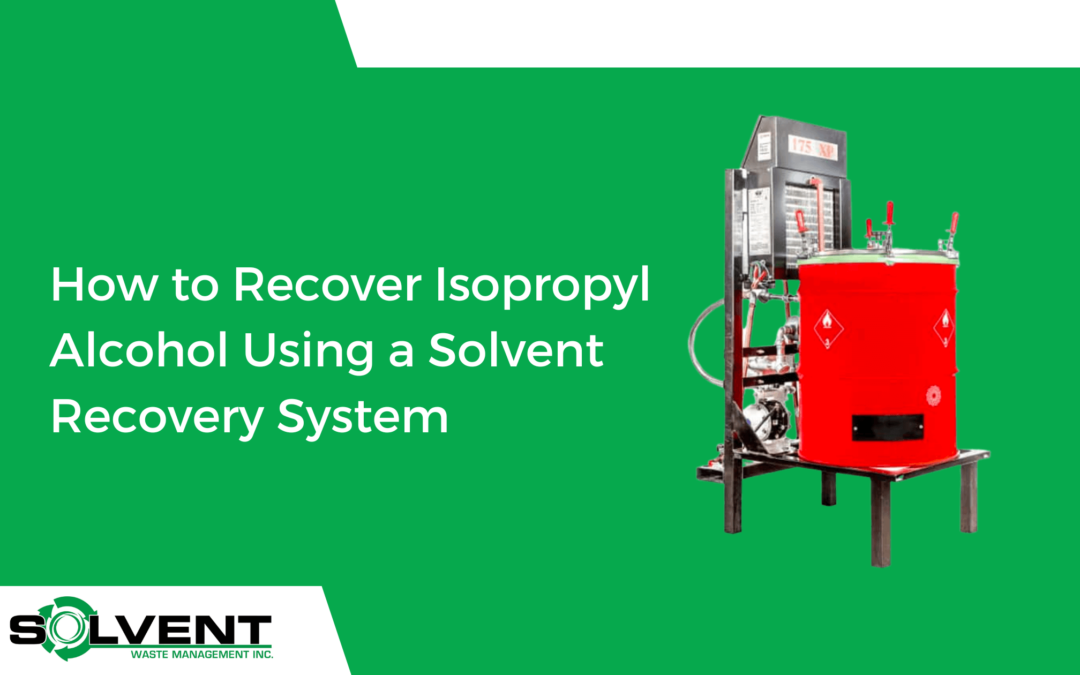Isopropyl alcohol, also known as rubbing alcohol, is a widely used solvent in various industrial processes and cleaning applications. However, the constant use of isopropyl alcohol can result in significant waste generation, leading to environmental concerns and increased costs.
To address these challenges, businesses can implement a solvent recovery system to reclaim and reuse isopropyl alcohol, promoting sustainability and cost-effectiveness.
In this detailed blog, we will guide you through the process of recovering isopropyl alcohol using a solvent recovery system. By understanding the steps involved and the benefits it offers, you can enhance your waste management practices while reducing your environmental footprint.
Step 1: Collection and Storage
The first step in the solvent recovery process is to collect used isopropyl alcohol. Ensure proper collection containers are available in work areas where isopropyl alcohol is frequently used. These containers should be clearly labeled and have a secure lid to prevent spills and evaporative losses. Once collected, store the containers in a designated area until the solvent recovery process can begin.
Step 2: Distillation Process
The solvent recovery system employs distillation as the primary method to recover isopropyl alcohol. The distillation process involves heating the used isopropyl alcohol to its boiling point, causing it to vaporize. The vapor then travels through a condenser where it is cooled and condensed back into liquid form. This purified liquid isopropyl alcohol is then collected in a separate container, ready for reuse.
Step 3: Filtration and Purification
In some cases, additional filtration and purification steps may be necessary to remove impurities and contaminants from the recovered isopropyl alcohol. Filtration helps ensure that the recycled solvent meets the required purity standards for its intended application.
Step 4: Quality Control
After recovering the isopropyl alcohol, conduct quality control tests to verify its purity and suitability for reuse. This step is essential to ensure that the recycled solvent meets the required specifications and is safe for its intended application.
Step 5: Storage and Reuse
Once the isopropyl alcohol has been successfully recovered and quality-tested, store it in appropriate containers designated for its reuse. Ensure that these containers are labelled accordingly to avoid confusion with new or unused isopropyl alcohol.
Benefits of Using a Solvent Recovery System for Isopropyl Alcohol
- Cost Savings: Implementing a solvent recovery system can significantly reduce purchasing costs for isopropyl alcohol as recycled solvent can be reused in processes.
- Waste Reduction: Recovering isopropyl alcohol reduces waste generation, leading to a more sustainable waste management practice.
- Environmental Impact: Recycling isopropyl alcohol reduces the demand for new solvent production, conserving natural resources and lowering greenhouse gas emissions.
- Regulatory Compliance: Proper solvent recovery aligns with environmental regulations and reduces potential liabilities associated with improper waste disposal.
- Improved Sustainability: Solvent recovery contributes to a greener and more eco-friendly approach to industrial processes, supporting corporate sustainability goals.
Conclusion
Implementing a solvent recovery system to reclaim isopropyl alcohol is a proactive and sustainable approach for businesses to manage waste, reduce environmental impact, and improve cost-efficiency.
The distillation process in the solvent recovery system allows for the efficient separation and purification of isopropyl alcohol, ensuring it can be safely reused in various applications.
By following the steps outlined in this guide, businesses can enhance their waste management practices, lower their carbon footprint, and promote a more sustainable future. Embracing solvent recovery not only benefits the bottom line but also demonstrates a commitment to environmental responsibility.

